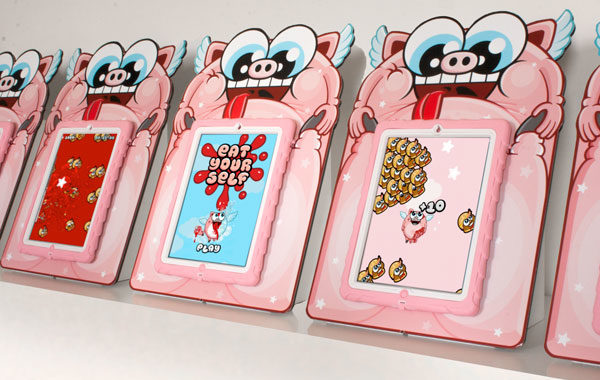Cannibalism is now a regular thing in the art world. I’m not being metaphorical by referring to the cutthroat competition of an art market mirroring the inhumanity of its elite clientele. I’m talking about actual artists eating people.
In 1996 the artist Marco Evaristti served his friends meatballs made from beef and fat extracted from his recent liposuction surgery. Upping the ante, in 2012 the artist Mao Sugiyama cooked his own penis and served bits of it to interested patrons. After receiving a hip replacement in 2014, Alexander Selvik Wengshoel chewed on his old hipbone in the name of art. Recently, the performance artist Arturs Berzins cut the flesh off two willing performers, cooked it and fed it back to them, broadcasting the event on Facebook. While these works garner media attention and shock the public into considering the limits of art and the body, centering on a critique of consumption in the real world, another work of art about cannibalism offers a wholly different avenue to address similar issues in a more approachable and subversive way—through a video game that may or may not exist, may or may not be a cult, and may or may not want you to dine on your own limbs for the sake of humanity.

Created by the artist and graphic designer Jason Gottlieb in 2013, the mobile game Eat Yourself has players control Pinky, a starry-eyed pig, as he ascends towards the heavens to take on his nemesis, Food Inc. On his quest for dematerialization, he has to avoid eating cute fast-food friends—fries, hamburgers, and shakes—as they plunge towards him from above. If Pinky eats them, he grows fatter until he eventually explodes. If he completes a level without eating anyone, he’s rewarded with a respite to eat himself, happily gorging on his ears, legs, stomach and entrails. If he’s really good, Pinky can consume himself entirely, becoming a radiant light transcending consumptive corporeality. It looks like a fun game, perfect for kids… but it’s also a religion complete with proselytizing tracts, devotional merchandise and mystical gurus. The game’s website claims it holds the key to “inner peace, happiness, and freedom!”
While many video games have players engage in acts of cannibalism, they do so through abject, zombie-esque tropes, and certainly don’t use self-cannibalism as a motivating plot device. Eat Yourself sets itself apart by positioning self-cannibalism as a positive, moral and fun endeavor, with a celebratory tone much like a Saturday morning cartoon. This makes the work’s underlying subversiveness even more palpable and desirable. It’s for kids, get it? But here’s the kick: the game might not even exist! For years Gottlieb resisted making the game available to the public, thereby denying the ability to consume his game about the evils of consumerism! In this way Eat Yourself does more to ignite relevant conversations about the ethics of material possession and who gets to eat whom, and to what end, than its video-game and performance-art counterparts.
Eat Yourself champions auto-sarcophagy as a solution to the contemporary condition, as a way to symbolically deal with capitalism’s buyer’s remorse. It’s a catharsis, but a worthwhile one. It may be a sarcastic put-on, but it’s certainly a welcome alternative to the more “serious” performative cannibalism we have grown to expect from more conventional corners of the art world. In the end, you control Pinky, you eat yourself, instead of having an artist do it for you.

